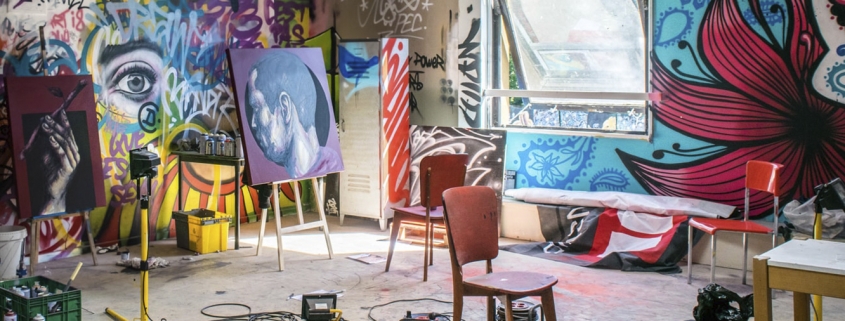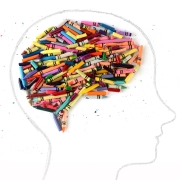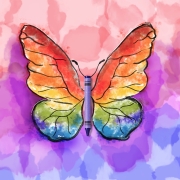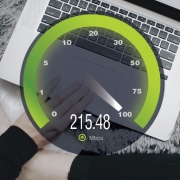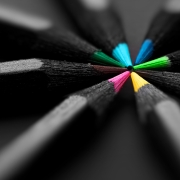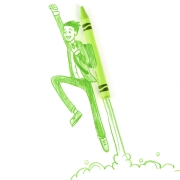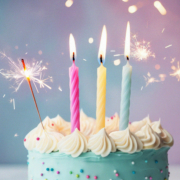Building A Creative Workspace When Working From Home
Working from home has its share of challenges—especially if you’re the creative type. More often than not, wobbly kitchen tables, makeshift offices and cramped bedroom corners just aren’t “muse worthy” locales.
So what is?
After all—this is your home. Not your private, studio-inspired, ISO-certified creative utopia.
But here’s the thing: it doesn’t have to be. In fact, recent research suggests it probably shouldn’t be.
Environmental Inspiration
The Cheung Kong Graduate School of Business (CKGSB) in Beijing has done some fascinating research on how environmental factors impact our ability to think creatively. Their findings suggest that there are optimal thresholds for creative inspiration, when it comes to lighting, sound, temperature, clutter and even color.
Interestingly, their findings imply that the ideal creative milieu isn’t necessarily the sleek, zen-garden-y kinda thing you’re probably expecting. In fact, creative inspiration thrives on a touch of chaos. A little bit of noise. A little bit of clutter. And a touch of the blues. Literally.
Sounds a little bit like home already, doesn’t it?
So, here are some tips on how to optimize your own enclave of creative chaos, based on CKGSB’s research…
Don’t Stress the Mess
Clutter can quell your inner perfectionist
Creative people are their own toughest critics. We challenge ourselves to do it right, do it better, and make it perfect. It all stems from our innate desire to assert control over whatever it is we’re doing. But in the creative process, maintaining total control over your ideas isn’t always beneficial.
CKGSB’s study suggests that moderate clutter can actually diffuse our instinct to self-regulate—which could lead to greater creative permission. When participants were given an insolvable task, those in a cluttered space abandoned it quickly. On the contrary, those in an organized space forced themselves to keep trying.
Dial up the Din
Moderate noise facilitates creative thinking
At around 70 decibels, study participants performed better in remote association tests (i.e., they were given a series of words and had to guess a related word) compared to higher or lower levels of noise. Coincidentally, that’s about the same level of noise you’d find in a coffee shop.
The prevailing theory is that low-level noise distracts the brain at a subconscious level: you wander off task momentarily, entertaining new ideas and parallel thoughts—which you then relate back to the task at hand. If things are too quiet, you get too focused one idea or approach.
Dim Your Wits
A darker room can invite freer thinking
Participants in CKGSB’s lighting study had greater success interpreting abstract stimuli (i.e., advertisements with symbolic references) in darker rooms, versus well-lit rooms. In other words, people extrapolated the meaning of cryptic, loosely related images more easily in low-light conditions.
It’s no secret that low light invites us to lower our inhibitions. Our subconscious tells us we’re less visible, and, therefore, less likely to be judged. But this notion translates to our thinking, as well as our actions: in low light, we’re not as apt to regulate our initial intuitions. Thus, we’re not as shy about trying new ideas.
Get Warmer
Slightly higher temperatures improve “affective” reasoning skills
When we rely on gut intuitions to make decisions, it’s called “affective” reasoning; this sort of thinking is essential to creativity. CKGSB’s study suggests that warm temperatures actually streamline our reasoning process, helping us use our “gut sense” to deconstruct and simplify complex challenges.
In the test, participants were asked to choose a car based on a list of attributes, relating to quality. When the list of attributes was exceedingly complex, participants performed better in higher temperatures—likely because they relied on their gut, instead of reasoning-out every last detail.
Go Blue
Blue may be the most inherently inspiring color
In CKGSB’s study, professional designers judged drawings done in blue as “more creative” than those drawn in red. But get this: the judges only saw black-and-white copies of the actual drawings! It just so happens they chose the ones originally drawn in blue.
Coincidence? Not when you consider the real-world context of the color blue: big skies, open oceans. Both suggest an open-ended vastness that invites big thinking and bigger ideas. There’s a reason we say, “the sky’s the limit.”
Find Your Angle
Harder edges inspire edgier thinking
Smooth, round shapes suggest harmony—and, by association, conformity. On the other hand, angles are inherently confrontational: two different directions, meeting one another head on. Not surprisingly, there’s evidence to suggest that spaces with angles and edges inspire more “outside the box” thinking.
In CKGSB’s study, some participants sat in a circle, while some sat in a more angular pattern. When told that 80% of consumers endorsed a certain product, those in the circle tended to align with the majority opinion. Interestingly, those seated in the angular configuration more often aligned with the minority opinion.
Your Ideas, Your Space
If there’s one thing we can say definitively about creativity… it’s that inspiration is subjective; there’s certainly no “one size fits all” for the perfect creative workspace. But CKGSB’s research proves that there is an important connection between the physical world around us and the world of ideas within us. And now—with COVID skewing the boundaries of domestic and professional life—understanding the nature of that connection has never been more important.
Matt Donahue is a Creative Director at Seed Strategy with a keen interest in product innovation and marketing theory. Matt is a graduate of Seton Hill University’s “Popular Fiction” master’s program and writes whenever he can.
Connect with us! Follow Seed Strategy on our LinkedIn, Twitter, Facebook and Instagram pages.

